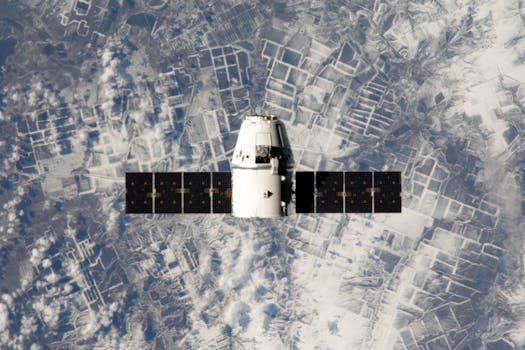The Future of Satellites: Revolutionizing Global Connectivity
The future of satellites is poised to revolutionize global connectivity, enabling faster and more reliable communication, navigation, and remote sensing. With advancements in space technology, satellites are becoming increasingly important for various industries, including telecommunications, navigation, and environmental monitoring.

The Future of Satellites: Revolutionizing Global Connectivity
The future of satellites is poised to revolutionize global connectivity, enabling faster and more reliable communication, navigation, and remote sensing. With advancements in space technology, satellites are becoming increasingly important for various industries, including telecommunications, navigation, and environmental monitoring. In this article, we will explore the future of satellites and their potential impact on global connectivity.
Introduction to Satellites
Satellites have been a crucial part of modern technology for decades, providing a wide range of services, including television broadcasting, telecommunications, navigation, and weather forecasting. However, the future of satellites is expected to be even more exciting, with the development of new technologies and the increasing demand for global connectivity. The future of satellites is expected to be shaped by advancements in areas such as satellite design, launch technology, and ground infrastructure.
Advancements in Satellite Technology
One of the key drivers of the future of satellites is the advancement in satellite technology. New satellite designs, such as small satellites and cube satellites, are being developed, which are smaller, cheaper, and more efficient than traditional satellites. These new satellites are enabling new applications, such as satellite constellations, which are networks of satellites that work together to provide global coverage. Additionally, advancements in launch technology, such as reusable rockets, are making it cheaper and more efficient to launch satellites into space.
Another area of advancement is in the development of new satellite components, such as antennas, transponders, and propulsion systems. These components are being designed to be more efficient, reliable, and cost-effective, which is enabling the development of more complex and capable satellites. Furthermore, the use of artificial intelligence and machine learning is being explored in satellite systems, which could enable satellites to operate more autonomously and make decisions in real-time.
Applications of Satellites
Satellites have a wide range of applications, including telecommunications, navigation, remote sensing, and weather forecasting. The future of satellites is expected to enable new applications, such as satellite-based internet, which could provide global coverage and connect billions of people around the world. Additionally, satellites are being used for environmental monitoring, such as tracking climate change, monitoring natural disasters, and detecting natural resources.
Satellites are also being used for navigation, providing location information and timing signals, which are essential for modern transportation systems. Moreover, satellites are being used for remote sensing, providing imagery and data on the Earth’s surface, which is used for a wide range of applications, including agriculture, urban planning, and disaster response. The use of satellites for weather forecasting is also critical, providing early warnings for severe weather events and enabling more accurate predictions.
Challenges and Opportunities
Despite the many advancements and applications of satellites, there are also challenges and opportunities that need to be addressed. One of the key challenges is the increasing amount of space debris in Earth’s orbit, which poses a risk to operational satellites and the environment. Additionally, there are concerns about the security of satellite systems, including the risk of cyber attacks and interference.
However, these challenges also present opportunities for innovation and growth. For example, the development of new technologies, such as satellite-based cybersecurity systems, could provide new business opportunities and create new jobs. Furthermore, the increasing demand for global connectivity and the growing importance of satellites for various industries is driving investment and innovation in the satellite industry.



